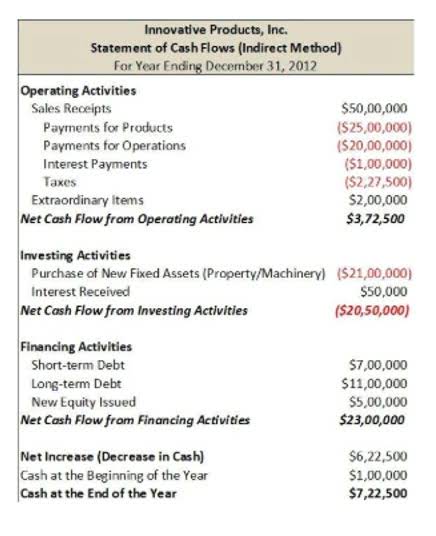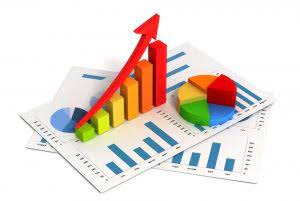
This can especially be seen in places still considered part of the “developing” world, where many of the jobs have been outsourced from the West. Suppose a company wants to reduce its carbon footprint by switching to renewable energy sources. They need to compare the additional costs (solar panels, wind turbines, and grid integration) against the incremental benefits (lower energy bills, positive brand image, and environmental impact). From an economic perspective, incremental cost embodies opportunity cost—the value of the next best alternative foregone. The incremental cost includes not only the flour, butter, and labor but also the potential revenue lost by not using the same resources elsewhere (e.g., making baguettes). From an individual standpoint, incremental cost plays a significant role in personal decision making.
Examples of Incremental Cost
AI-powered productivity software like Cflow can enhance and simplify processes to the core, making it easy for businesses to improve them. The platform can be used to assign work with reminders and notifications, enabling the work to be completed in the stipulated time. Goal-setting frameworks like SMART (Specific, Measurable, Achievable, Relevant, Time-bound) allow business teams and employees to navigate their improvement initiatives more efficiently. A different approach is habit incremental cost stacking, where new habits are nurtured by anchoring to the existing ones.
- The first step forward is analyzing the current status of the processes and their drawbacks.
- For example, producing even one extra widget would cause a tiny bit extra wear and tear on the machine.
- Here are some notable benefits of continuous incremental improvement habits to look into.
- This analysis allows individuals to make informed decisions based on their budget and financial goals.
- When incremental costs are added, the fixed costs normally do not change, implying that the cost of the equipment does not vary with production levels.
- A fixed building lease, for example, does not alter in price as output increases.
The Advantages of Incremental Cost Analysis
- Include material, labor, transportation, etc. required to sustain the base case output.
- Like in the above example, it is evident that the per-unit cost of manufacturing the products has decreased from ₹ 20 to ₹ 17.5 after introducing the new product line.
- The marginal cost can be either short-run or long-run marginal cost, depending on what costs vary with output, since in the long run even building size is chosen to fit the desired output.
- A change in fixed cost would be reflected by a change in the vertical distance between the SRTC and SRVC curve.
- Variable costs rise or fall in relation to a company’s production or sales volume, rising as production increases and falling as production drops.
- Businesses must determine the exact volume at which they can get the greatest value.
They are always composed of variable costs, which are the costs that fluctuate with production volume. As a result, the total incremental cost to produce the additional 2,000 units is $30,000 or ($330,000 – $300,000). Most business leaders and decision-makers look forward to radical changes that will bring an immediate surge in processing and operational excellence. Yet, when you trace the most significant and successful endeavor initiated by the organization, it will be these minute, minimal changes made. This approach comes with minimal effort and delivers the most significant result, allowing teams to make consistent and small steps. This way, companies develop a realistic production roadmap, with an exact number of goods to be produced and the pricing per unit, to achieve profit goals in a business quarter.
Businesses with Limited Resources
- Understanding incremental costs can help a company improve its efficiency and save money.
- By exploring different perspectives, we can gain valuable insights into the significance and impact of incremental cost analysis in decision-making processes.
- This analysis helps identify inefficiencies in production processes, enabling better resource allocation.
- When making short-term decisions or selecting between two possibilities, such as whether to accept a special order, incremental costs are important.
- In a perfectly competitive market, a supply curve shows the quantity a seller is willing and able to supply at each price – for each price, there is a unique quantity that would be supplied.
As a result of externalizing such costs, we see that members of society who are not included in the firm will be negatively affected by such behavior of the firm. In this case, an increased cost of production in society creates a social cost curve that depicts a greater cost than the private cost curve. Of great importance in the theory of marginal cost is the distinction between the marginal private and social costs.

Example of incremental revenue vs. incremental cost

What is most interesting about these two metrics is that many businesses tend to focus solely on one or the other when making decisions and this can lead to negative impacts on their profits. Companies must understand how both of these metrics interact so that balanced decisions can be made that ensure increased revenues and decreased costs. If the LRIC rises, it is likely that a corporation will boost product pricing to meet the costs; the inverse is also true. Forecast LRIC is visible on the income statement, where revenues, cost of goods sold, and operational expenses will be altered, affecting the company’s total long-term profitability. Companies utilize incremental revenue as a comparative measure with their baseline revenue level to calculate their return on investment. They may then determine how much money they can afford to spend on marketing efforts and how much sales volume is required to generate a profit for the company.
Variable Overhead
It is often computed when a corporation creates enough output to cover fixed costs and has progressed past the breakeven threshold, where all future costs are variable. However, incremental cost refers to the extra cost incurred as a result of recording transactions the decision to expand output. Understanding incremental manufacturing cost guides strategic business decisions by providing a clear picture of the financial impact of production changes. Companies can evaluate whether increased production enhances profitability or simply offsets additional expenses. This analysis helps identify inefficiencies in production processes, enabling better resource allocation. Understanding incremental cost is vital for effective decision making and cost-benefit analysis.
For example, while a monopoly has an MC curve, it does not have a supply curve. In a perfectly competitive market, a supply curve shows the quantity a seller is willing and able to supply at each price – for each price, there is a unique quantity that would be supplied. Incremental costs change at different scales of production, and so do their benefits. Businesses must determine the exact volume at which they can get the greatest value. This is an example of economies of scale, or the cost advantage companies get when production becomes efficient. And the more units sold at marginal cost, the higher its contribution to the net income.
These micro-changes evolve to become a habit that eventually builds momentum, leading to improved outcomes. This in turn builds motivation in employees and positively impacts the results in the long run. A leveraged buyout (LBO) is a transaction in which a company or business is acquired using a significant amount of borrowed money (leverage) to meet the cost of acquisition. Incremental cost guides you in choosing when to make your product and when to outsource. Often, it is more cost-efficient to outsource from a specialty company instead of doing it from scratch. The base case is your existing or normal volume level before any proposed volume increase.

Vertical Analysis: What It Is, How It Works, and Key Examples

Remember that incremental cost analysis should consider both short-term and long-term effects. https://www.bookstime.com/ Always weigh incremental costs against potential benefits and align them with your goals. Remember, incremental cost isn’t just about numbers; it’s about informed choices. Whether you’re optimizing production, launching a new product, or allocating resources, understanding incremental cost empowers better decision-making. While the calculation itself is straightforward, the key is identifying the right base and incremental volumes to analyze. Applying this methodology to your business decisions yields pivotal insights for profitability and strategy.
